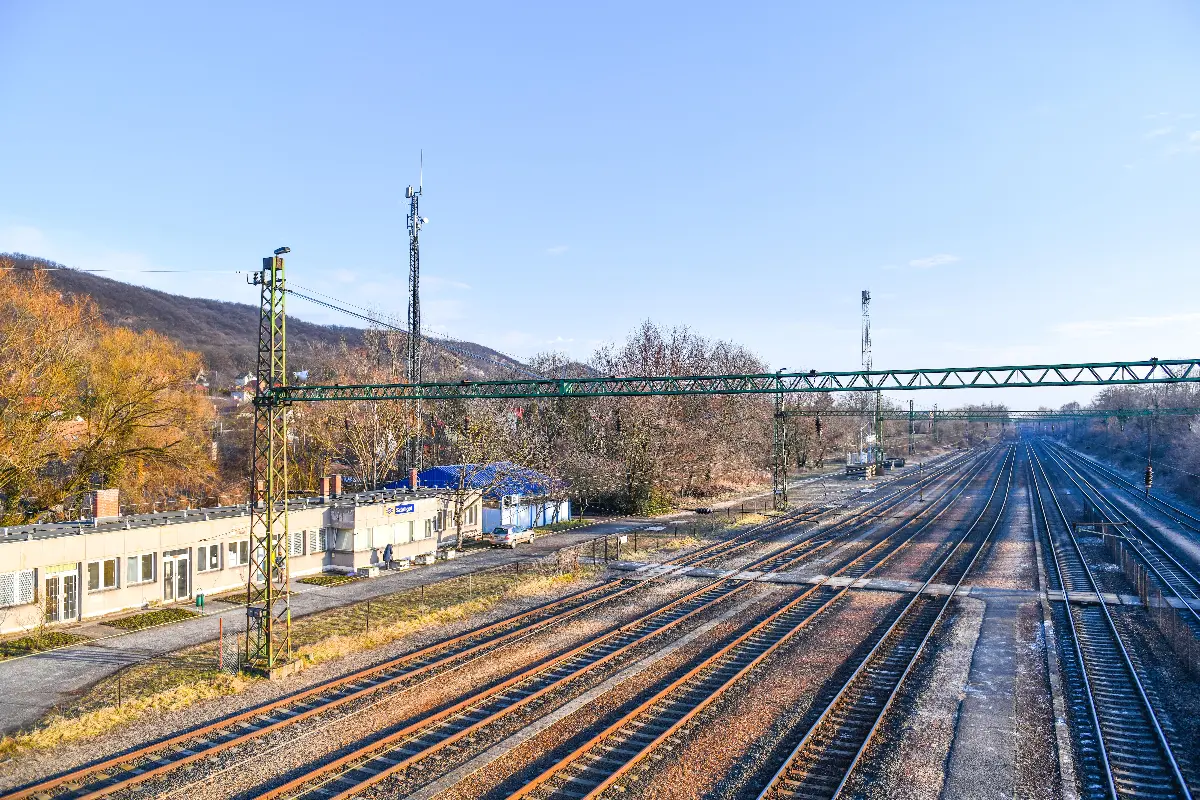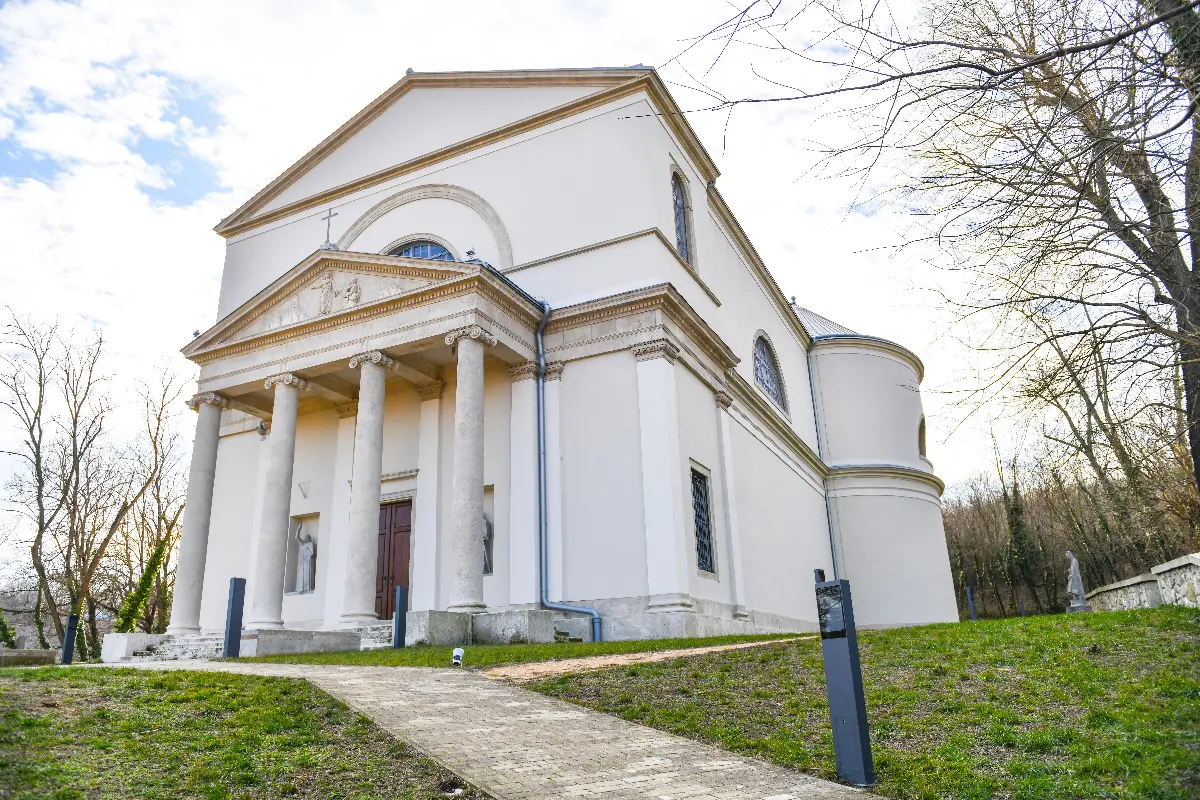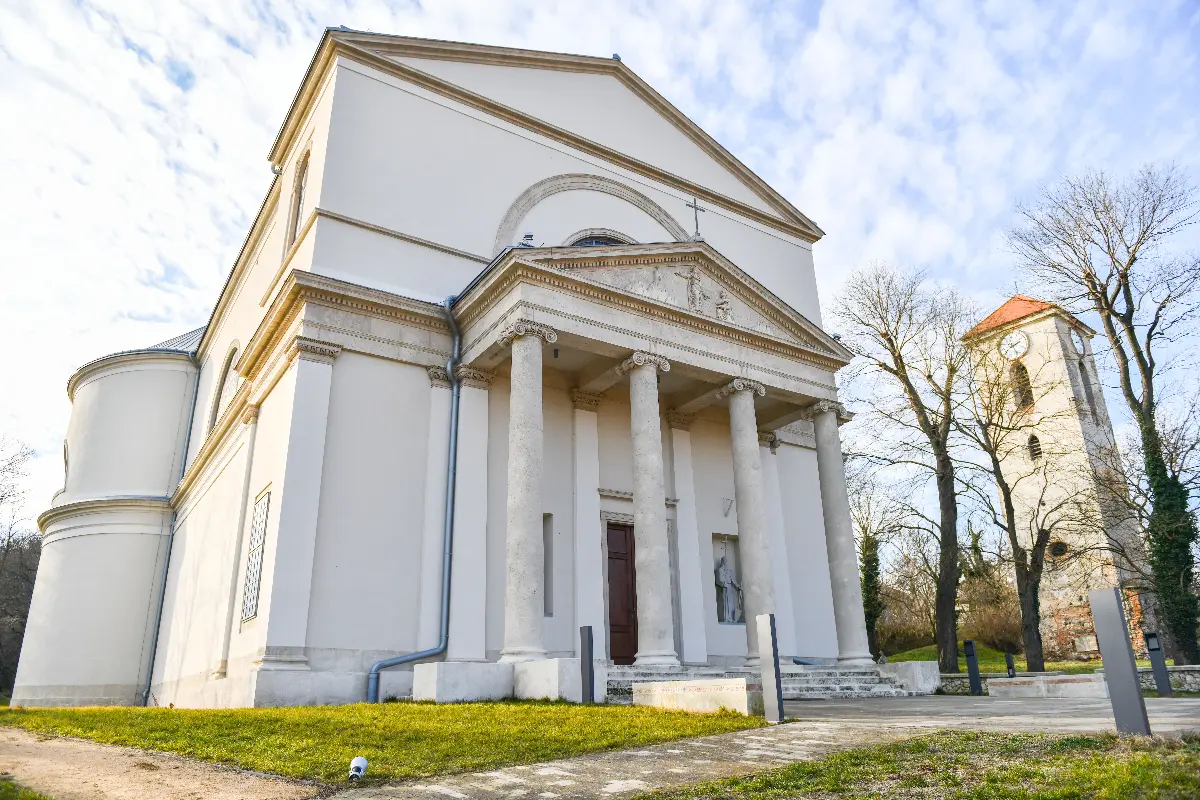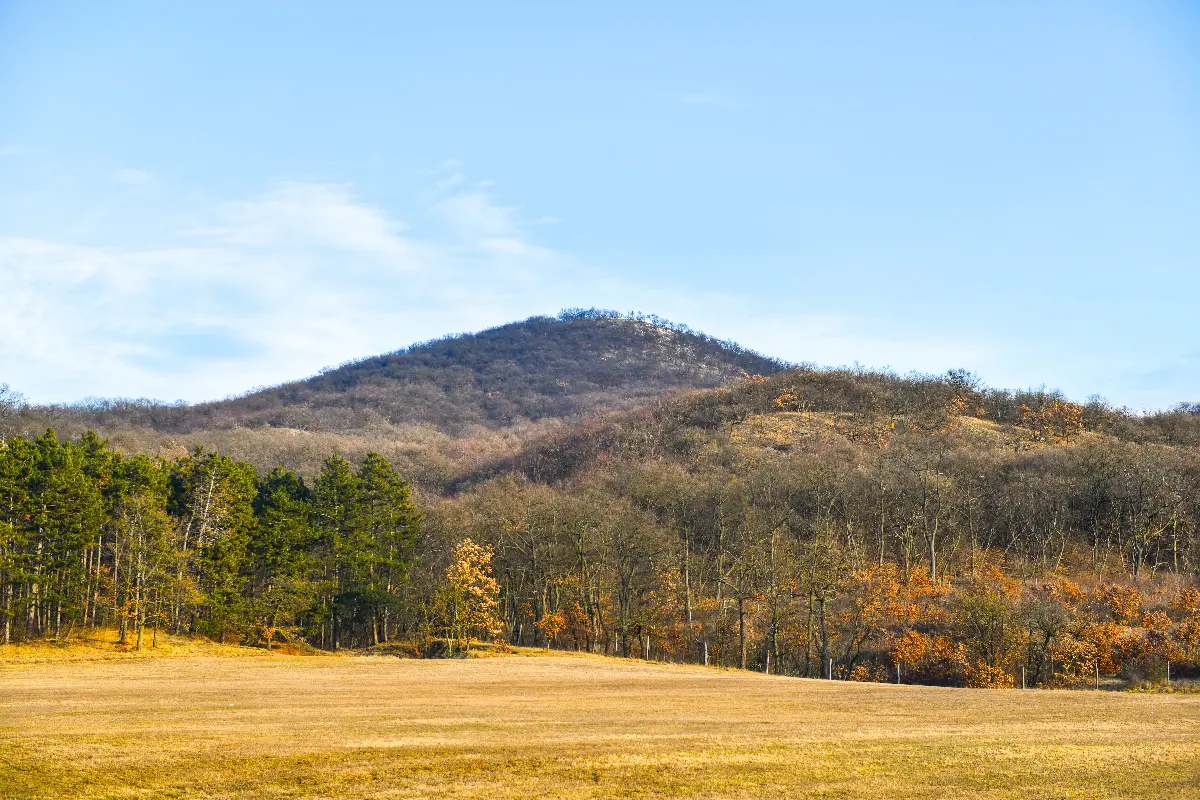
Helyszín címkék:
Three special walking routes around the Zsámbék basin
Káldi Emese
Vál
It is not by chance that the village has remained in the memory of János Vajda, who grew up here. The poet longed for the countryside for the rest of his life. It's worth reading his famous poem, “In the Forest of Vaal”, if you come here for a walk: the countryside is as peaceful today as it was in the poem. We start our roughly five-kilometre journey from the “Váli Hétfájdalmú Szűz katolikus templom” (Seven Pain Virgin Catholic Church) in St Stephen's Square. There were earlier churches on this site, but this one - the ninth largest church in Hungary - was built in the early 1800s, according to the wishes of the landlord. It is an imposing but welcoming building, with a 15th-century church tower next to it. Behind the buildings lies the Catholic cemetery - this is the way to go, via the Calvary Hill as the Mausoleum in Ürmény is not to be missed. With its unique layout and delicate decoration, the family's resting place almost fades into the surroundings. We continue to the end of the cemetery. Here the landscape opens up and we find ourselves in the fields. Walk along the dirt road to the right for about two kilometres! A slice of Vál occasionally appears among the cultivated fields. After the children have had a run around, we can find some houses nearby: the former vineyard area. We pass the gate of the Hollósy estate, then after a short forested stretch, we emerge again on the valley floor. Turning right, we continue towards the village and soon walk along Kossuth Street. If you don't want to walk back to the church through the houses, you can detour up the hill and take Ady Endre Street on the way back. The view from here is magnificent: the houses of the village below, and the other side of the valley opposite.
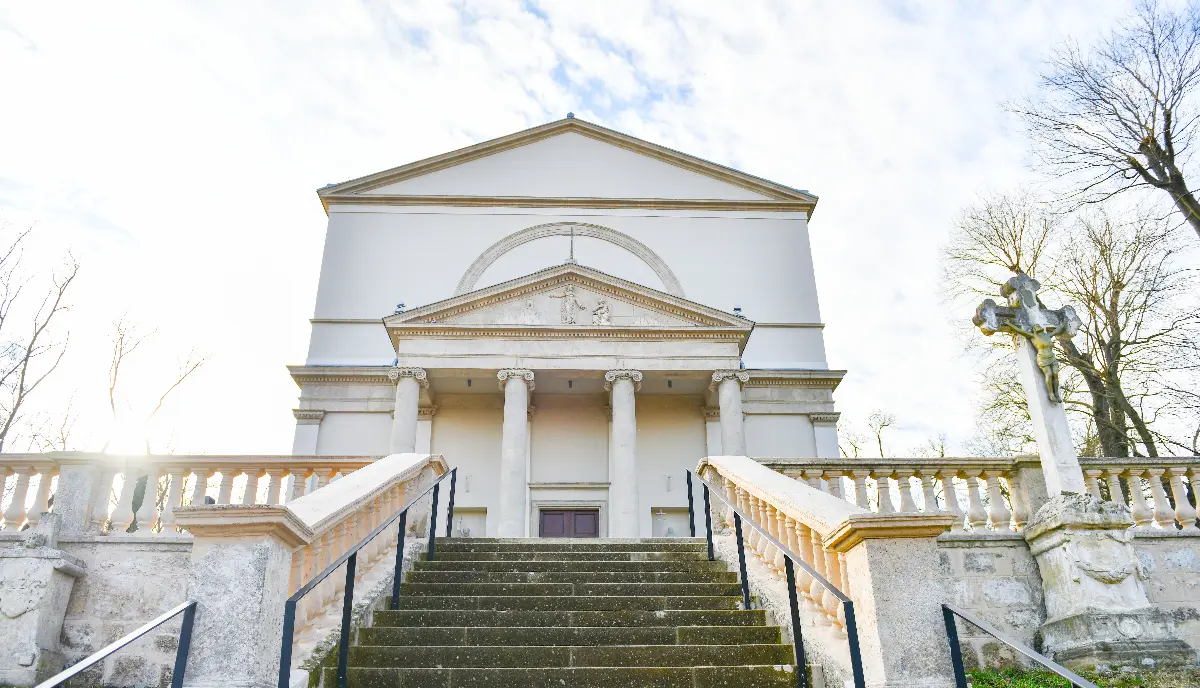
Tök
The route from Tök following the green leaf signs, also offers a beautiful panorama. The roughly five-and-a-half-kilometre walk starts from Main Street, on Somogyi Béla Street. Turning the corner, you are greeted by a pleasant village scene. We climb up the vineyard hill between small gardens and old houses. The chalky soil here is more conducive to white wines, which have been produced here since Roman times and there are still several wineries. After the fields, the road leads to the wooded area of the Nyakas Hill (not to be confused with the Nyakas Stone in Biatorbágy!) - but first, let's look back at the village and the Zsámbék basin! In good weather, you can spend a long time spying out distant points. From here it takes ten minutes to reach the top of the hill, where you can walk on level ground for about two kilometres through the forest until you reach the former quarry. The limestone from the abandoned quarry was a popular raw material for major construction projects at the end of the 19th century and was also transported to the Parliament. But nature has also been able to shape this soft limestone with ease, and the steps of the Giants, a few hundred metres away, are a fascinating reminder of this. It is worth a detour; children always enjoy jumping on the "steps". From here you can turn around and follow the sign back to the village. By the time we reach the bottom, we may be reinvigorated and feel like walking another five hundred metres through the “Little Row” to the cellars of Tök. If you turn towards the village, the baroque Calvinist church is worth a visit.
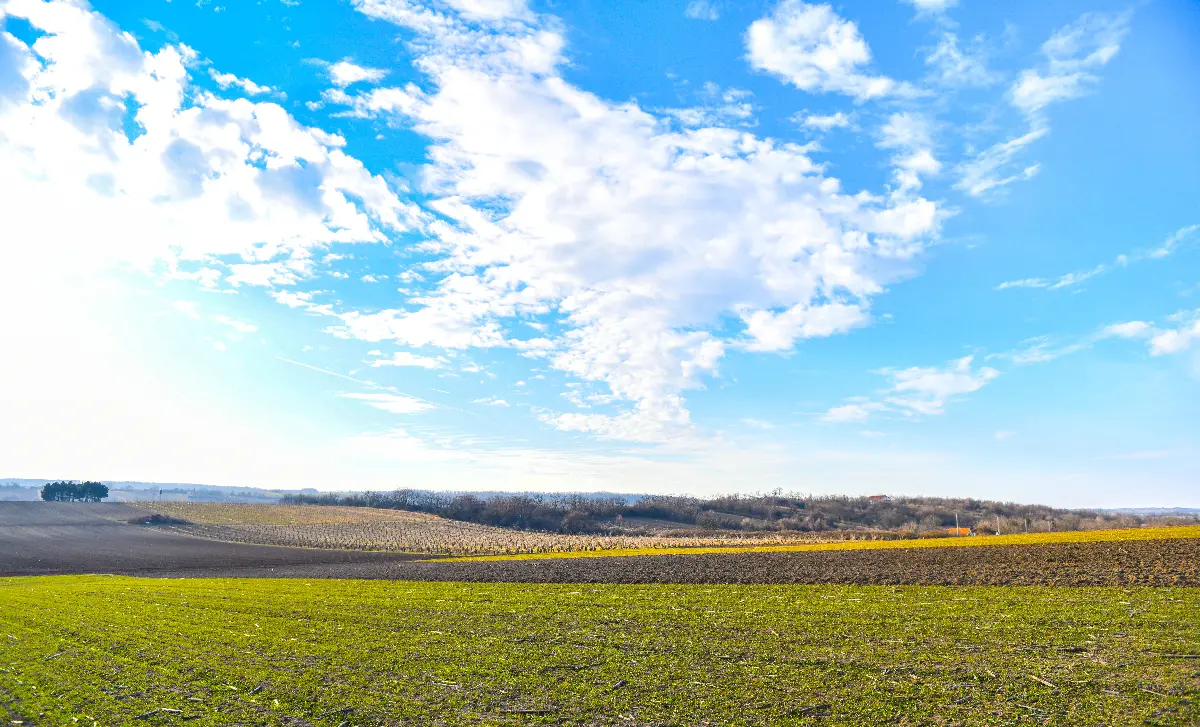
Szárliget
Szárliget is closer to Tatabánya, about half an hour by train or car from the capital. In the 1980s it split off from Szár and became an independent settlement; it was formerly called “Rokkanttelep” (Disabled Site) because the land, parcelled out in the early 1900s, was once sold to disabled pensioners and civil officers. It becomes a silent, peaceful village. The village on the border of Vértes and Gerecse is crossed by the Countrywide Blue Tour and the Mária-út. Take the latter and walk for a while between the houses of the village. Our goal is the “Zuppa-tető” (the summit of Zuppa Hill)! From the end of Gyöngyvirág utca (Lily-of-the-valley Street), the road leads through the woods in the “Cseresznyés-völgy” (Cherry Valley). But soon a steep climb begins, and when you reach a junction where you can continue in several directions - take the blue triangle to the right, so you can enjoy not only the low karst forest on the side of the Zuppa Hill but also the magnificent panorama that appears here and there. In time (and after meeting up with the red marker trail), the blue triangle route turns left, from which you soon reach the peak. At the top of the 384-metre-high mountain stands the wooden cross erected by the Association of Szentimreváros in 2002. After taking a deep breath, we can say that it was worth climbing up the mountain: the view is beautiful, with Szárliget below and the Vértes mountains in the distance. On the way back, you can take the blue triangle path again; where the road meets the red triangle route, you can continue on with the blue signs, or you can take the red ones. Soon we will reach the end of our 5.5 km hike - and in Szárliget we can reward ourselves with a good burger or a cake at the “Mezei Cukrászda” (Mezei Confectionery).
